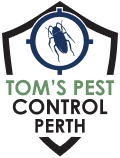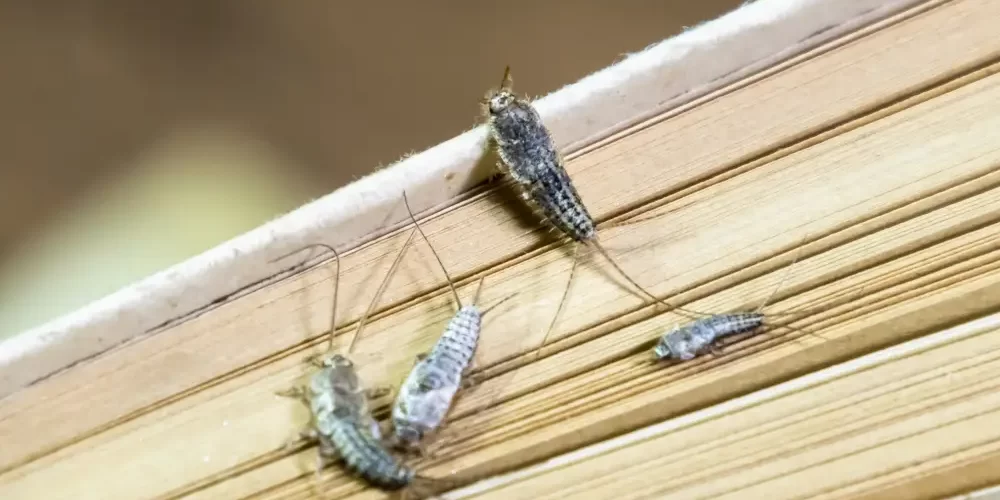Silverfish are one of the most common household pests in Australia. These tiny, wingless insects are notorious for damaging property and hiding in dark, damp corners of your home. They can be hard to spot, but their presence is often noticeable through the damage they cause. Silverfish control is essential to keep your home pest-free and protected. In this guide, we will discuss everything you need to know about silverfish, from identification to prevention and professional control services.
What Are Silverfish? Understanding the Common Household Pest
Silverfish are small, wingless insects known for their silvery appearance and fish-like movements. They are commonly found in Perth homes, particularly in kitchens, bathrooms, and attics, where humidity is high. Silverfish are nocturnal, which means they are most active at night.
Silverfish are scavengers, feeding on a wide variety of organic materials. They especially love to tuck into starches and sugars, which can be found in paper, books, wallpaper, glue, and even food. Although they don’t bite humans, they can cause significant damage to personal belongings without you even knowing – until it is too late.
Why Silverfish Infest Homes: Common Attractants
Silverfish are drawn to certain conditions that make your home the perfect environment for them. Here are the main attractants:
- High humidity: Silverfish thrive in humid environments, making kitchens, bathrooms, and basements prime targets.
- Dark, secluded areas: These pests like to hide in dark spaces, such as behind furniture, in closets, and in the corners of rooms.
- Food sources: Silverfish feed on starches, sugars, and organic materials, which are often found in old books, wallpaper, or even stored pantry items.
- Warm temperatures: They prefer warmer environments, which is why they are often found in homes with insufficient ventilation.
By understanding why silverfish are attracted to your home, you can take steps to make your home less inviting to these pests.
Signs of a Silverfish Infestation
Recognising a silverfish infestation early is key to controlling the problem before it escalates. Here are some common signs:
- Visible silverfish: You may spot silverfish darting across floors or walls, especially at night.
- Damaged items: Silverfish feed on paper, books, clothing, and food, so signs of damage to these items, such as holes, yellowing, or crumbling, may indicate an infestation.
- Fecal droppings: Small, black, pepper-like droppings are often left behind in areas where silverfish are active.
- Molted skins: Silverfish shed their skin as they grow. Finding these tiny, translucent exoskeletons in your Perth home is another indication of their presence.
By identifying these signs early, you can prevent further damage and take control of the situation.
How to Control Silverfish: DIY vs. Professional Services
When dealing with a silverfish infestation, there are two primary options: DIY solutions or professional pest control services from Tom’s Pest Control in Perth. Let’s explore both:
DIY Solutions
Several DIY methods using common materials found at the local hardware store or supermarket can help control and eliminate silverfish. These are best suited for smaller infestations. Some of the most effective DIY solutions include:
- Diatomaceous earth: This natural substance kills silverfish by dehydrating them. Sprinkle it in areas where you’ve seen activity, such as along baseboards or in cupboards.
- Boric acid: This powder can be spread in cracks and crevices where silverfish are hiding. It acts as a poison that silverfish ingest when they groom themselves.
- Traps: Silverfish traps, which use sticky surfaces to capture the pests, can help monitor and reduce their numbers.
- Essential oils: Silverfish dislike the scent of certain oils, such as lavender, citrus, and eucalyptus. Spraying a diluted solution around affected areas may help repel them.
While these methods can be effective, they may not address the root cause of the infestation or provide long-term solutions.
Professional Silverfish Control
For larger infestations or if DIY methods fail, it’s time to call in a professional pest control company. Here’s what you can expect:
- Inspection: A professional from Tom’s Pest Control will conduct a thorough inspection of your home to locate silverfish hotspots and assess the extent of the infestation.
- Treatment plan: Based on the findings, your local TPC pest control expert will create a customised treatment plan that may include spraying insecticides, sealing entry points, and removing food sources.
- Long-term prevention: A pest control service will provide advice on how to prevent future infestations, such as improving ventilation and reducing humidity.
Professional pest control services are especially beneficial for larger infestations, as experts have access to stronger, more effective treatments.
10 Effective Ways to Get Rid of Silverfish for Good
If you’re dealing with silverfish, here are 10 effective ways to eliminate them and keep your home pest-free:
- Reduce humidity: Use a dehumidifier to reduce moisture levels in areas where silverfish thrive.
- Seal cracks and crevices: Caulk gaps around windows, doors, and baseboards to prevent silverfish from entering.
- Keep your home clean: Regularly vacuum and dust to remove food sources and silverfish eggs.
- Use natural repellents: Citrus, lavender, and eucalyptus oils can help deter silverfish.
- Set traps: Use sticky traps to capture silverfish and monitor the infestation.
- Boric acid treatment: Apply boric acid to areas where silverfish are active.
- Diatomaceous earth: Sprinkle diatomaceous earth around high-traffic areas for silverfish.
- Remove food sources: Store pantry items in airtight containers and keep food off counters.
- Declutter: Silverfish love cluttered spaces, so decluttering will help reduce hiding spots.
- Consult a pest control company: For large infestations, hire a professional pest control company like Tom’s Pest Control in Perth to effectively handle the problem.
These methods, when combined, can help you eliminate silverfish and prevent them from returning.
How to Prevent Silverfish Infestations in Your Home
Prevention is always better than dealing with an infestation. Here are some tips to keep your home silverfish-free:
- Maintain low humidity: Keep humidity levels below 50% using dehumidifiers or air conditioning, especially in areas like bathrooms and kitchens.
- Store food properly: Keep food stored tightly in sealed containers to prevent silverfish from being attracted to it.
- Regular cleaning: Regularly vacuum and wipe down surfaces to remove crumbs, dust, and potential silverfish eggs.
- Fix leaks: Silverfish are drawn to moisture, so fix any leaks in your plumbing to eliminate their water source.
By following these prevention tips for your Perth property, you can significantly reduce the risk of a silverfish infestation in your home.
Silverfish Control Myths Debunked: What Actually Works
There are many myths surrounding silverfish control. Let’s clear up some common misconceptions:
- Myth 1: Silverfish only eat paper: While silverfish do feed on paper, they also consume other materials like glue, starch, and fabrics.
- Myth 2: Silverfish are harmless: While silverfish don’t bite, they can eat you out of house and home. They will shred your books, wallpaper and clothing and can cause structural damage.
- Myth 3: Silverfish can’t be eliminated: Silverfish are controllable with the right combination of treatments, especially when you act early.
By understanding what actually works, you can take the right steps to effectively control and eliminate silverfish from your home.
Why Professional Silverfish Control Is Worth the Investment
While DIY methods can work for small infestations at your Perth property, professional silverfish control offers several advantages:
- Expertise: Pest control experts know where silverfish are likely to hide and can target these areas with precision.
- Long-term solutions: Professionals provide ongoing monitoring and advice on preventing future infestations.
- Efficiency: A professional from Tom’s Pest Control in Perth can eliminate the infestation more quickly and effectively, saving you time and frustration.
If you have a persistent or large silverfish problem, hiring a pest control company can provide peace of mind and long-term results.
How to Identify and Treat Silverfish Damage
Silverfish can cause significant damage to personal belongings. To identify and treat damage:
- Check books, paper, and fabric: Look for small holes or yellowing in paper or cloth.
- Use boric acid or diatomaceous earth: Apply these substances to areas where damage has been identified to eliminate the pests.
Early identification and treatment are key to preventing extensive damage from silverfish.
Natural vs. Chemical Silverfish Control: Which Is Better?
Natural methods, such as essential oils and diatomaceous earth, are eco-friendly and safe for your home. However, chemical treatments may be more effective for larger infestations. Consider your preferences and the severity of the infestation when choosing between natural and chemical control methods.
Why Silverfish Are Attracted to Your Home and How to Stop Them
Silverfish are attracted to moisture, food, and dark, secluded spaces. By reducing humidity, sealing cracks, and keeping your home clean, you can make your home less attractive to these pests.
Silverfish can cause significant damage to your home if left unchecked. By understanding their behaviour, identifying signs of an infestation, and using effective control methods, you can protect your home from these persistent pests. Whether you choose DIY methods or professional pest control services, early intervention and prevention are key to keeping your home silverfish-free.
Get free quotes in minutes
Get quotes from our qualified and licensed tradies Perth-wide.
Get free quotes in minutes
Get quotes from our qualified and licensed tradies Perth-wide.
 (08) 6202 7096
(08) 6202 7096



